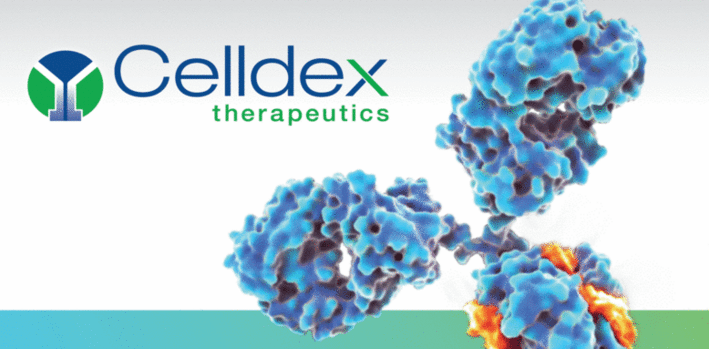
March 7th, 2016. An independent safety advisory board recommends the discontinuation of a late stage trial of Celldex Therapeutics, Inc. (NASDAQ:CLDX) lead candidate, Rintega. The company closes the day’s US session at a 54% discount to it’s open price. Premarket March 8th, a further 1% decline brings this discount to a solid 55%. As markets sold off on the company, management held an emergency conference call to address the situation – primarily to communicate findings and justify the panel decision. The discussion was decidedly vague – based primarily on the fact that the Celldex management team had very little to go on as far as understanding why the drug performed so well in trials to date, yet failed to show any discernible benefit (or even equivalence) to a current SOC control arm.
Click Here For More Market Exclusive Updates & Analysis
The question now, is whether Celldex retains any value, and if so, is that value underrepresented at its current price? To answer this, we must look at the remainder of its pipeline.
First, an important point – although the company plans to continue providing the drug to patients on the trial (at their, or their physicians’ request) it’s pretty much dead in the water from a chances of commercialization perspective. Now and again a company will announce the failing of a drug in a pivotal trial, only to submit for approval based on data collected in an earlier trial. With Rintega, however, the previous trial, while demonstrating excellent efficacy and safety profiles, didn’t involve a large enough patient population to justify consideration. On the aforementioned conference call, Celldex management hinted that they would discuss the possibility of such a consideration with the agency, but the chances of this discussion resulting in any positive outcome are practically nothing.
With this in mind, the company, and in turn its valuation, is relying on three primary candidates: Glembatumubab, Valilumab and CDX-1401 in melanoma and triple negative breast cancer, solid tumors and renal cell carcinoma, and melanoma respectively.
Each of these drugs is in an ongoing phase II trial across their various indications, and before the conference call yesterday, we didn’t really get any indication s to when we could expect data. In turn, potential milestones and catalysts remained unclear, primarily as a result of the excessive focus on Celldex’s GBM program. As of yesterday, however, we know a little bit more. Specifically, we are looking at the second half of this year for the Glembatumubab in its melanoma indication, and the first half of next for the same drug in its breast cancer indication. Varilumab is set to present in the carcinoma indication mid-2017.
So essentially, what this GBM data has done, has reset Celldex to an early-mid stage development biotech. Rarely does a company in such a position have a valuation in excess of $300-$500 million, and even that’s a push if phase II hasn’t offered up any indication of efficacy. In other words, we’re looking at Celldex based on small scale phase I data, which was primarily collected to determine safety and tolerability. There’s a Bristol-Myers Squibb Co (NYSE:BMY) partnership that sees the two collaborate on the development of a combination therapy investigating the aforementioned Varilumab in combination with the BMS drug Opdivo, wit ha host of solid tumor indications including advanced non-small cell lung cancer, metastatic melanoma and colorectal cancer, among others, but cost burden for this is shared, so we are still looking at this based on preclinical data and a phase I safety study (a phase I/II kicked off in January and data is expected H2 2017). In short, the partnership isn’t worth much from a dollar value perspective until we see some firm efficacy data. Which brings us to financials.
The company had circa $72 million cash on hand at end December, 2015, and expects this to carry it through to end 2017 in light of the latest announcement. This means that, without the dumping of Rintega, Celldex would likely have been looking to raise funds this year.
So what’s the takeaway here? Well, we’ve watched Celldex closely over the last few years, and it’s a shame to be covering the failure of what has longed looked to be a promising, and more importantly very much needed, therapy in GBM. That said, Celldex is now an early stage biotech with pipeline promise, but nothing firm, and no real chance of any approvals before the close of the decade. With this in mind, even with its current market capitalization of $366 million representing a 55% discount to the pre-announcement valuation, Celldex looks to remain overvalued, and could slide further before the week closes.





